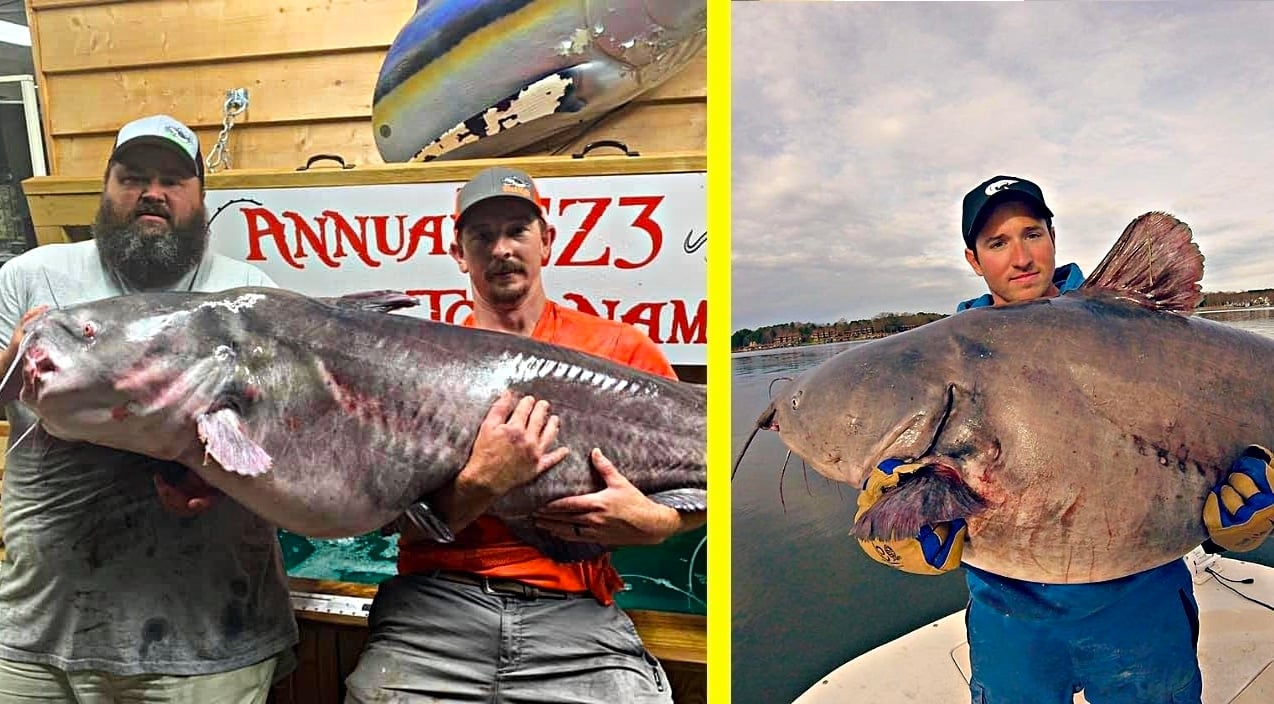Here’s Why NC Is The Best Place To Reel In A Massive Blue Catfish
on Feb 08, 2022 • Updated Jan 15, 2025

According to fishing guide and former record holder for catching blue catfish, Zakk Royce, North Carolina might just be the best place in the United States to reel in a blue catfish.
In 2015 when Zakk was 29-year-old, he made headlines after reeling in a 91-pound blue cat and the very next day he broke his own record capturing a 105-pounder
Zakk owns and operates Blues Brothers Catfish Guide Service, on Lake Gaston and Kerr Lake which are both part of the Roanoke River chain of lakes that were flooded to generate electricity and control flooding.
Zakk’s 105-pounder record lasted until July 2021 when Rocky Baker caught and released a 127.1-pound blue catfish, using a gizzard shad on Lake Gaston.
Baker said he also used a Mad Katz Catfish Down Rod with a Penn Squall 20 reel spooled and 40-pound-test Berkeley ProSpec Chrome mono to capture the fish.
Then, just the other day, while 54-year-old Bill Sutton and his 13-year-old daughter, Georgia, were fishing during a Kerr Lake Ice Bowl Catfish Tournament, they reeled in a massive 112-pound blue catfish and won first place in the competition taking home $3,400.
“It was cold and snowing, and Georgia kept telling me we should go in because we weren’t going to catch anything anyway,” Bill Sutton said, according to Outdoor Life. “I was just getting over COVID from two weeks earlier, and I wasn’t as strong as usual. But I told her I don’t quit at anything, and we were going to catch a 100-pound catfish that day.”
Big blue catfish captures like this keep coming out of North Carolina and that’s why many anglers know it’s one of the best places to go try to reel in a trophy fish.
According to Zakk, many of the biggest blue cats are caught in the winter and the best way to target them is to fish in the thermocline zone. That’s the transition layer of water between warmer water at the surface and cooler water deep below.
Zakk says using floats and planer boards to suspend bait over the thermocline is the best way to capture them in the winter. However, in the summer it’s more effective to use the rift fishing or trolling technique.
“Although I still try to stay around 0.5 mph in the summer just like other times of year, I have caught them in the summer trolling as fast as 3 mph,” Zakk told Field & Stream.












